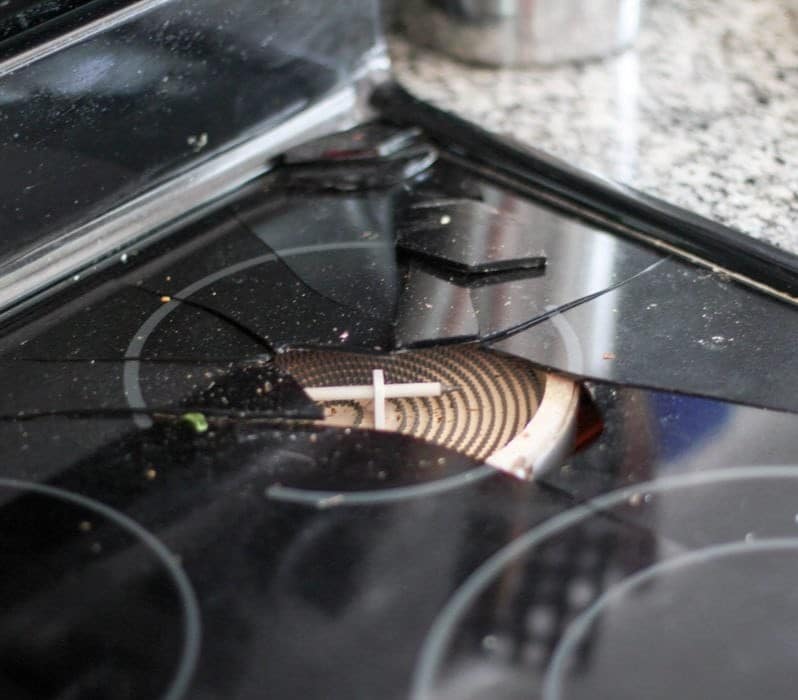Glass stovetops are a favorite in modern kitchen design thanks to their sleek appearance and ease of cleaning. But while they offer style and convenience, these surfaces are far more delicate than traditional stovetops. Mishandling them can lead to scratches, cracks, or even complete shattering. To protect your kitchen appliance and keep it functioning like new, it’s essential to avoid these nine dangerous glass stovetop mistakes.
1. Scrubbing with Abrasive Cleaners Can Scratch the Surface
Using harsh scrubbing tools or abrasive cleaners is a fast way to ruin your glass stovetop. These materials leave behind permanent scratches that not only dull the appearance but also affect performance. Instead, opt for non-abrasive cleaning agents specifically made for glass stovetops and always use a soft cloth or sponge for wiping.
2. Placing Heavy Cookware Increases Risk of Cracks
Unlike gas or coil stovetops, glass tops aren’t built to support extreme weight. Setting down cast iron pans or oversized pots can result in cracks or catastrophic breakage. Choose lighter cookware and avoid cookware with rough or uneven bottoms that can exert uneven pressure on the surface.
3. Dragging Cookware Leads to Unsightly Scratches
Never slide pots or pans across the surface of your glass stovetop. Even the smallest debris under your cookware can cause long, deep scratches. Always lift and place cookware carefully to preserve the integrity and shine of the glass.
4. Ignoring Spills Can Permanently Damage the Finish
Spills left on a hot surface quickly bake onto the glass, making them extremely difficult to remove later and potentially damaging the finish. Wipe up any food or liquid immediately after the stovetop cools down to prevent buildup and staining.
5. Cooking with Dirty Pans Transfers Residue
Placing greasy or dirty pots directly on the glass can leave behind residue that’s difficult to clean and could lead to discoloration over time. Always make sure your cookware is clean before placing it on your stovetop to maintain a smooth and spotless surface.
6. Setting Hot Lids Face Down Can Cause Thermal Shock
Putting a hot lid face-down on a cool glass stovetop creates an extreme temperature contrast that can lead to stress cracks or sudden shattering. Glass doesn’t handle thermal shock well. Instead, set hot lids on a heat-safe trivet or allow them to cool before placing them down.
7. Overlooking Chips or Cracks Leads to Major Hazards
Even a small chip or crack in a glass stovetop is a major red flag. Left unaddressed, these imperfections can grow and eventually lead to the glass shattering under heat or weight. If you notice any damage, stop using the stovetop and seek professional repair or replacement immediately.
8. Heating Empty Cookware Can Warp the Surface
Turning on a burner with an empty pot or pan on top can cause the cookware to overheat quickly, damaging both the pan and the stovetop. Always ensure there’s water, oil, or food inside your cookware to distribute heat properly and prevent scorching the glass.
9. Ignoring Manufacturer Guidelines Can Void Warranties
Each stovetop model comes with its own set of care instructions. Failing to read and follow the manufacturer’s guidelines can lead to mistakes that damage the appliance and void your warranty. Always consult your user manual to understand the best practices for your specific model.
Final Thoughts: Keep Your Glass Stovetop Safe with Smart Habits
Maintaining a glass stovetop requires more than just regular cleaning—it demands attention to detail and thoughtful usage. By avoiding these nine risky habits, you can extend the life of your stovetop, keep your kitchen looking pristine, and prevent costly repairs. Whether you’re a home chef or just love a spotless kitchen, treating your appliances with care is a simple but powerful way to protect your investment.
